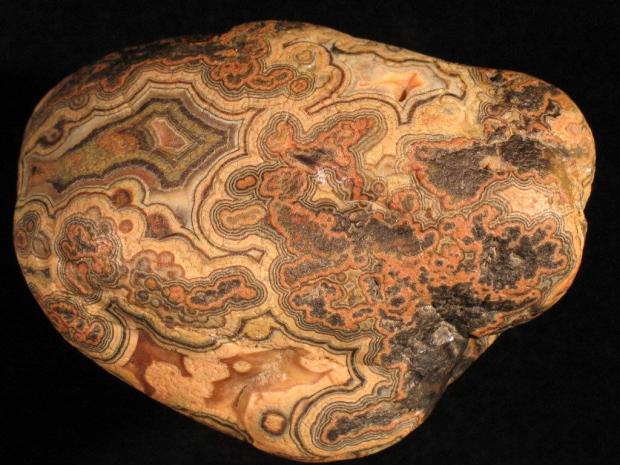Special guest article from Show-Me Rockhounds club members Dan and Connie Snow

Group picture of Fairburn agates – Dan Snow
Fairburn agates are a form of microcrystalline chalcedony, 100% silicon dioxide with a hardness of 6 ½ to 7 on the Mohs scale. They are also called fortification agates because of their banding. They were formed approximately 300 million years ago in an ancient limestone bed of an inland sea. To hunt Fairburn agates requires looking at every rock and turning many with a rock pick. It is strictly surface hunting no digging, mining, cracking or breaking rocks. The photos shown are exactly the way the agates were found, with no cutting, polishing or tumbling having been done.

Frog Rock – Dan Snow
Fairburn Agates found by Dan and Connie Snow. Collected from the Fairburn Agate beds of South Dakota and the Oglala National Grasslands in Nebraska.












